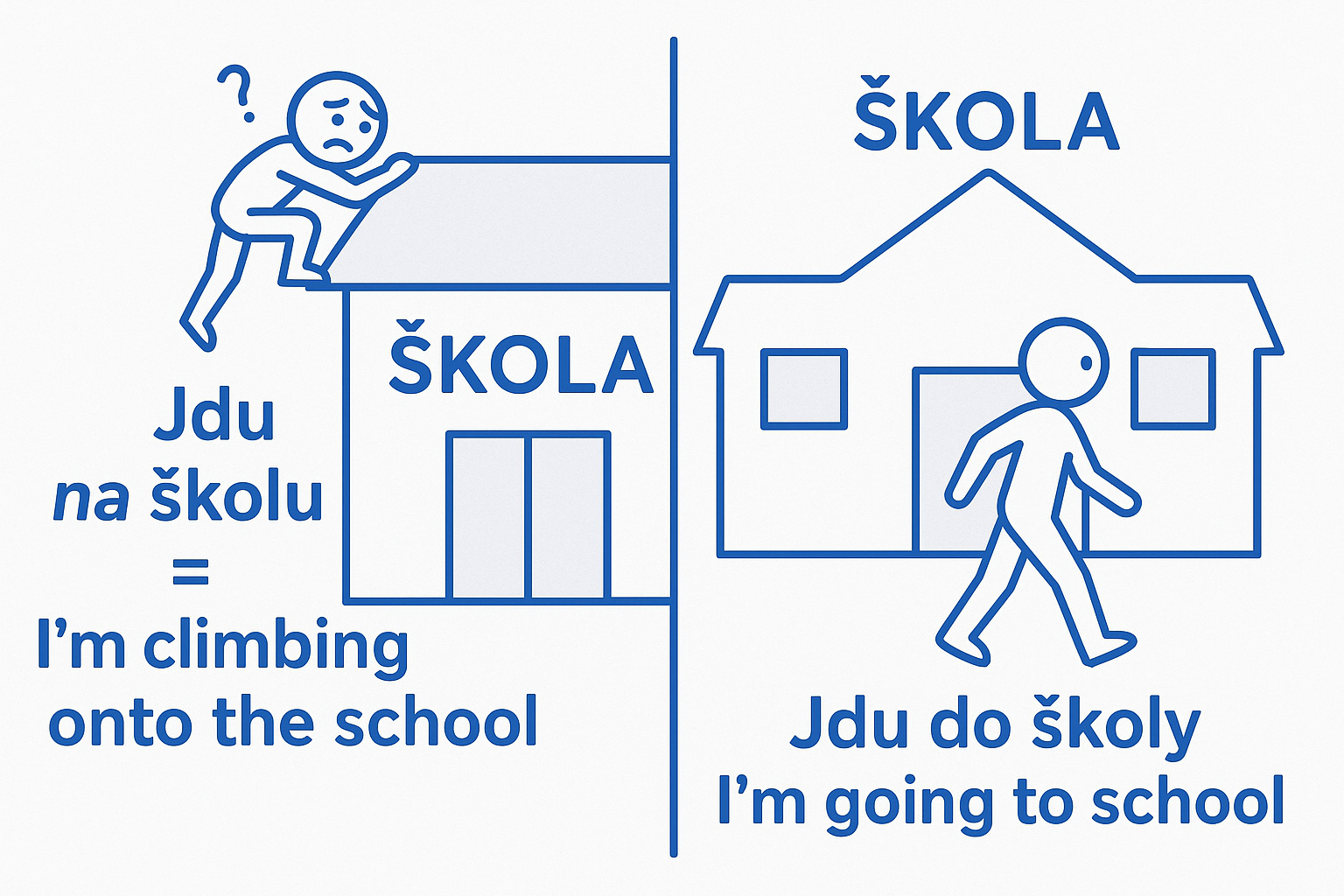KAM vs. KDE: Stop Mixing Them Up Once and for All
If you’ve ever frozen mid-sentence wondering whether to say KAM or KDE, you’re not alone. These two innocent-looking words both translate as “where”, but they belong to two completely different universes. Don’t worry. By the end of this article you’ll know exactly which one to use, and you might even laugh about it.
Standing, Moving, Leaving: How Czechs Slice Up “Where”
Both these sneeky words mean “where”, but they ask about completely different things:
KDE? → Where are you? (location, static, no movement)
KAM? → Where are you going? (direction, movement towards a target)
Think of it this way:
KDE = standing still
KAM = moving your butt somewhere
If you mix them up, Czechs will understand you, but you’ll sound like you’re teleporting. And if that wasn’t enough, Czech also sneaks in a third troublemaker: ODKUD (“where from”).
ODKUD? (where from?) – motion away from a place
Cases and Prepositions: The Grammar Behind the Scenes
Czech doesn’t stop at just asking where. It changes the case depending on whether you’re moving into, staying in, or leaving a place.
Here’s the cheat sheet:
This pattern is everywhere in Czech. Notice how the preposition + case combo changes with motion.
Struggling with Czech cases? If figuring out whether it’s do školy, ve škole, or ze školy makes your head spin, you’re not alone. Cases are tough — but they don’t have to be. Grab my Czech Cases Cheat Sheet and make sense of all those endings once and for all. It’s the shortcut every Czech learner needs.
Real-Life Dialogues
Let’s play out some situations to make this stick.
Classic phone call
Kde jsi? – Jsem v práci. (I’m at work.)
Kam jdeš potom? – Do hospody! (To the pub!)
Odkud jdeš teď? – Ze školy. (From school.)
With friends
Kde se sejdeme? – V kavárně. (At the café.)
Kam půjdeme pak? – Na pivo. (For a beer.)
Odkud přijde Petr? – Od doktora. (From the doctor.)
At the bus stop
Kam jede ten autobus? – Do centra. (To the city center.)
Kde stojí? – Na zastávce. (At the stop.)
Odkud jede? – Od nádraží. (From the station.)
3 Common Mistakes (and How to Avoid Them)
Mistake 1: Kde jdeš? (Where are you walking?)
❌ Sounds like bad Czech.
✅ Say: Kam jdeš?Mistake 2: Kam jsi? (Where to you are?)
❌ Sounds like you got hit by Google Translate.
✅ Say: Kde jsi?Mistake 3: Mixing do and na.
Jdu na školu = I’m climbing onto the school building.
Jdu do školy = I’m going to school (the correct one).
Mixing do and na is a common mistake…
The Secret Memory Hack
If you keep this in mind, you’ll never get lost in Czech. Well… at least linguistically.
KAM = movement. (Think: camera moving.)
KDE = location. (Think: dead still.)
ODKUD = away. (Think: out of somewhere.)
Next time you’re asked Kde jsi?, don’t panic. If you’re sitting in a café, say V kavárně. If you’re rushing late, say Jdu do kavárny. And if you’re finally leaving after too much beer, proudly say Jdu z hospody.
That’s Czech spatial grammar in action!

